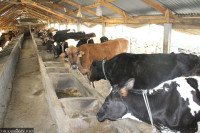Money
Nepal plans new ICT blueprint to bridge digital divide
Although internet use in least developed countries like Nepal is growing rapidly, disparities still exist between different groups.
Krishana Prasain
Nepal’s telecom regulator is drafting an integrated national Information and Communication Technologies (ICTs) policy to improve access to information technology to all aspects of society and development and to avoid the widening of the digital gap.
Nepal has observed impressive growth in the information and communication sector in the last few years.
Although internet use in least developed countries like Nepal is growing rapidly, disparities still exist between different groups. For example, the percentage of women using the internet is lower than that of men. Additionally, there is a disparity observed between individuals living in urban and rural areas.
“With the substantial growth in the ICTs, there are many issues we have to address as per the changing times,” said Min Prasad Aryal, director at Nepal Telecommunications Authority.
The proposed draft envisions to serve as an umbrella policy framework, encompassing telecommunications and broadband, ICTs and digital economy landscape to meet the development aspirations of the country, said Aryal.
The world is changing. Emerging business models and disruptive technologies such as artificial intelligence (AI), robotics, and the Internet of things are transforming the way work is done. These digital technologies are allowing governments and enterprises globally to unlock the potential to achieve exponential growth.
There are strong linkages between digital adoption and GDP growth. According to a World Bank report, every 10 percent increase in internet penetration in a country results in incremental economic growth of 1.3 percent.
Nepal government has formulated the Telecommunication Policy 2004, National Broadband Policy 2014, and National Information and Communication Technology Policy 2015.
But today, technology is based on internet protocol (IP) and requires coherent and integrated policy responses. IP based technologies are Voice over IP (VoIP), Internet Broadcasting, and Wireless Mobile Technology.
“All these existing policies will be integrated into a comprehensive policy,” said Aryal.
While the Covid-19 pandemic has had a sweeping impact on economic activity, it has also resulted in an exceptional surge in the use of various digital solutions.
Workers around the world have shifted to telework and online conferencing, while many students have had to follow their classes remotely, supported by a variety of digital technologies.
Aryal said that the existing policy target to achieve some goals by 2020 has expired.
Under the Sustainable Development Goals of the United Nations target 9.c, least developed countries should significantly increase access to information and communications technology and strive to provide universal and affordable access to the internet by 2020.
“We have achieved some targets and some targets might not be achieved.”
But in Nepal, internet access is still not affordable.
According to the Connectivity in the Least Developed Countries Status Report, Nepalis pay more for internet access than other South Asians.
In 2020, a Nepali had to spend 2.6 percent of their gross annual income to buy internet service, which puts Nepal behind India, Sri Lanka and Pakistan in affordable digital access where the cost is less than 1 percent.
The gross national income of a Nepali stood at $1,191 in 2020.
According to the Connectivity in the Least Developed Countries Status Report, 2021 published by the International Telecommunication Union recently, broadband service in developing countries should not cost more than 2 percent of the gross national income per capita.
The report has highlighted that countries like Nepal need practical solutions to improve digital access and should formulate concrete policy recommendations to accelerate progress towards universal and affordable connectivity.
The development in the telecommunications and digital economy sector has demanded the need to formulate policy to promote innovation and enhance overall readiness to connect transformative potential unleashed by technological advancements, as per the authority.
The draft will be prepared by carrying out a general diagnostic study of the ICT and digital economic sector in Nepal within the overall context of existing policy frameworks highlighting, among others, current state-of-play, opportunities, challenges and pain-points feeding into policy recommendations, said Aryal.
Internet penetration had reached 116.91 percent as of mid-November 2021, up from 80 percent in the same period in 2020.
Online shopping, digital payment has gained popularity since the first lockdown in March 2020.
Aryal said that new targets will be fixed under the policy provisioning on the policy level, determining the role of stakeholders working in the field of information and technology which can be licensing, spectrum, cyber security, upgradation, fourth industrial revolution, 5G, IoT, smart city, minimising the environmental impact done by ICT, infrastructure among other.
The government has allocated funds to prepare the new blueprint.




 13.12°C Kathmandu
13.12°C Kathmandu















